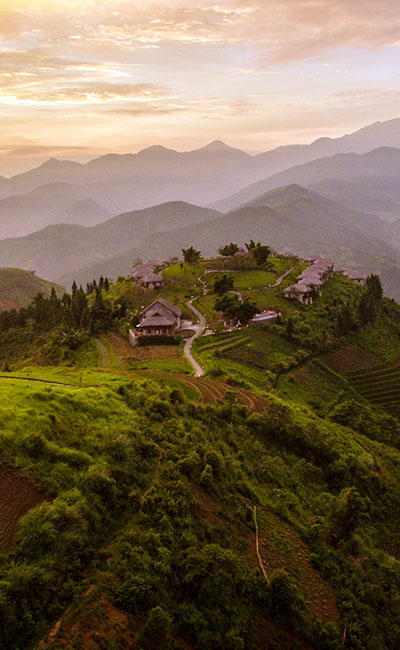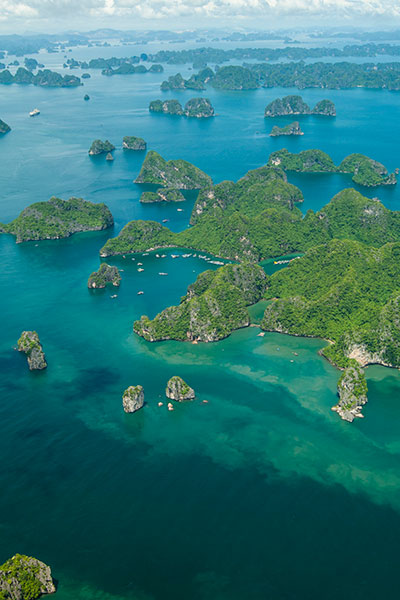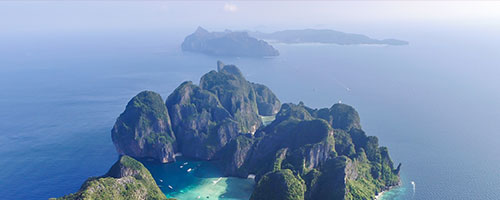Vietnam is about as famed for its rice fields and terraces as France is for its wine and cheese. In a country where rice is called “white gold”, this comes as no surprise. When travelers visit, seeing the rice field dotted countryside is a must, and here knowing when and where rice harvesting seasons take place, is vital. Our local Production Senior Executive, Le Hoang Son, has explored the rice-growing regions of Vietnam and discovered the best places and times to enjoy their unique beauty. He’s provided detailed advice in our Product Brochure to make deciding a whole lot easier for you and your travelers.
 Le Hoang Son in Mu Cang Chai, Vietnam
Le Hoang Son in Mu Cang Chai, Vietnam
Now why, in the first place, is visiting the rice fields and terraces of the country integral to any journey here? Vietnam is consistently ranked as one of the top five rice exporting countries and one of the top ten rice consumers in the world. Average production varies from year to year but hovers around 40 million tonnes, about half of which comes from the Mekong Delta. Rice is more than just a staple, and Vietnamese people have a special relationship with the “white gold”. Rice is a bringer of wealth, and more importantly, connects families and communities, whether out in the fields or in street side restaurants. A visit is incomplete without learning about this dynamic.
 Mu Cang Chai, Vietnam
Mu Cang Chai, Vietnam
Rice here has its own story. According to folk legend, rice was not produced but summoned by the fervent prayers of people. Each home would receive a large ball of rice that descended from heaven. One day, a woman was sweeping the floor of her house, as ordered by her husband, to welcome the rice ball. The large rice ball landed in the house when the woman was still sweeping, hit the broom, and then broke into many pieces. It is believed that since then the people of Vietnam had to toil and work with their own hands to grow rice.
 Mu Cang Chai, Vietnam
Mu Cang Chai, Vietnam
That hard work and the rice harvesting season is dependent on several factors. Rice harvesting seasons vary from year to year and region to region, and are affected by the location of fields/terraces, the rainy season, the quality of the lands, and of course, the type of rice.
Popularly known places are Sapa (for its rice terraces) and the Mekong region (for its abundant rice fields), but even here specific areas are better visited at certain times of the year (or perhaps, best not visited at all). Here, Le Hoang Son, has considered factors such as high-tourist season, rain, bad roads, cloud cover and surrounding landscape. Hue and Hoi An, for example, make for easy access and leisurely cycle tours, but enjoying these rice-growing destinations is highly influenced by the rainy season. The Central Highlands, on the other hand, have a very different harvesting season and are prone to droughts, but have a beautiful landscape of various crops.
 Sapa, Vietnam
Sapa, Vietnam
 Vung Liem, Mekong Delta, Vietnam
Vung Liem, Mekong Delta, Vietnam
If exploring the rice fields and terraces of Vietnam are on your travelers’ itineraries (and they ought to be), our expertly created Product Brochure will give you a detailed overview of the best areas to visit, and the best times to go. Added notes provide further insight to each area’s advantages and disadvantages, making planning ahead a whole lot easier.














 English
English
 French
French
 German
German
 Italian
Italian
 Spanish
Spanish

